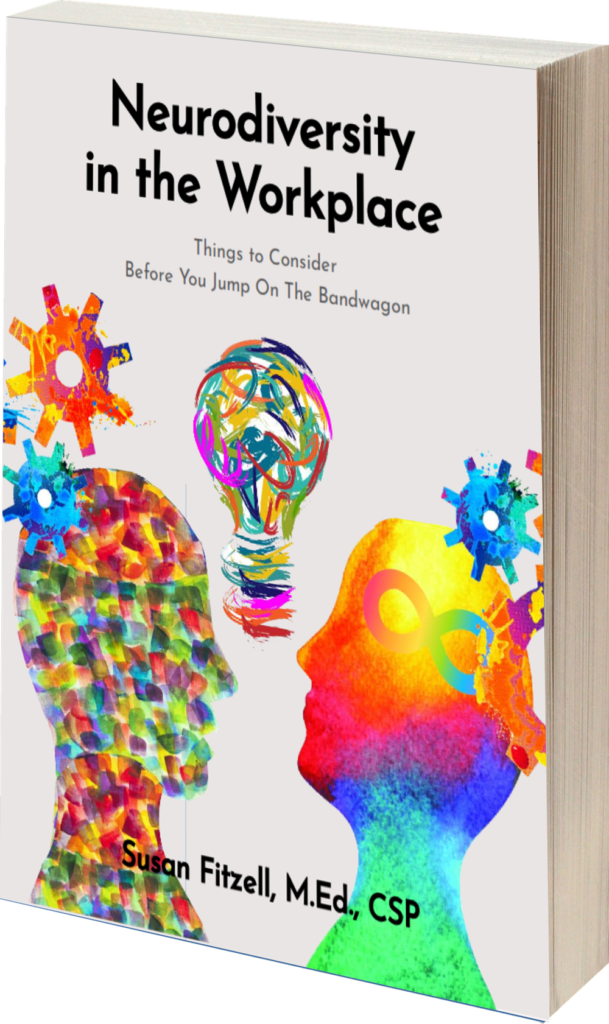
Our faces are as different as our learning patterns. While companies train their employees through learning management systems (LMS), some have only achieved a 50% improvement in employee productivity. What about the other 50%? Chances are these LMS are too generic and can’t cater to the learning needs of all employees, creating a learning gap in the workplace, especially among those whose brains are wired differently.
Do you ever wonder why we have so many books on the same topic but by different authors? Here’s why. Everyone has a learning culture that may differ from the next person; when you find an author who can relate information in a way that you explicitly understand, you tend to read their books more often because they get you.
If companies took this information and implemented it in their offices, they’d significantly increase employee knowledge growth and skill development, especially among their neurodivergent employees. Let’s dive deeper.
Supporting Neurodiversity in the Workplace in 2022
No employee would want to lose their job or stay stuck on one level in their role; the neurodivergent employee is no different. But considering how most companies run LMS and other training programs, many employees can’t digest the new material and perform well when tested. These systems are based on teaching techniques that are centuries old and cater to people who learn in one way — through text and lecture.
It’s tough enough for neurodivergent employees to manage their roles at work. Add to that the challenges they face because their world is designed for people whose brains are NOT wired differently; they still have to follow processes to upskill that don’t fit how they learn. This lack of differentiation in learning opportunities hinders their ability to apply for promotions or perform better at their jobs to secure their spots.
Challenges Neurodivergent Employees Face with Generic LMS
The following quote from “The Expertise Economy” by Kelly Palmer and David Blake proves that LMS usually don’t provide the best learning outcomes for employees.
[a] “In August 2017, Janice Burns, MasterCards Chief learning officer, conducted an impact study involving around 1,000 MasterCard employees to gather data for analysis at the company level. The data indicated that active users of MasterCard’s new learning platform were more likely to say there are more productive (54 percent), more effective in their job or role (51 percent), and more invested in growing their careers (46 percent) than non-users, and 80 percent more likely to say they’re more collaborative.”
Why are these LMS not reliable?
The root cause often lies with organizational management; they’re yet to understand the diverse learning preferences, beliefs about personal learning capabilities, and skill sets their employees bring to the table toward learning new material.
Not only do they not recognize these preferences, but they also don’t know how to bridge the learning gap between the LMS or training program they’ve instituted in the organization and the individual employee needs.
If companies want to support their neurodivergent staff members, they must bridge the learning gap and prepare to make accommodations. Here’s how.
Ways to Better Support Neurodivergent Employees’ Learning
[b] A 2015 study interviewed ten neurodivergent software engineers and asked them about the challenges that limit their potential in the workplace. Out of the 58 neurodivergent respondents who answered the question of whether there were workplace accommodations they felt would be beneficial for them, 15.5% were in the affirmative.
Some suggested that the company review its performance evaluation and hiring processes. Here’s what an interviewee had to say: Despite my excellent technical performance, I’m often given average reviews for reasons directly related to my Attention Deficit Disorder (ADD) symptoms. Another said the interview process did not cater to people with disabilities, “I also have Tourettes [sic], so I can get nervous and lock up. I will pass 40% of the interviews and fail 60%.”
So how can companies embrace neurodivergent learning in the workplace? Through:
Effective Feedback Systems
The study concluded that “neurodivergent employees also reported different cognitive styles, such as sensitivity to details and patterns, which may be an asset to their career if nurtured and recognized by employers.” For employers to understand their neurodivergent staff, they need to listen and understand their workplace and learning needs.
Re-education
According to [c], one recent study that analyzed neurodivergent employees’ barriers at work concerning job application, recruitment, and working processes, re-education can be a powerful tool. The researchers advised employees and neurodivergent individuals to unlearn stereotypes associated with neurodiversity and gain the relevant education needed to make accommodations at work, foster communication, and improve the overall employee experience.
Workplace Accommodations
Employers should make accommodations that will include comprehension rates, favorable training environments, and other factors to improve the training and learning performance of their neurodivergent staff.
How to Provide Support in the Workplace
While knowing how to support neurodivergent employees is a step in the right direction, the icing on the cake is putting in the work and effecting this support. Employees should: [d]
● Follow up with the feedback from their staff and make necessary accommodations and adjustments to their LMS and other training programs they may have.
● Leverage the strengths of their neurodivergent workforce rather than focus on their weaknesses — a strength-based approach.
● Set up a reward system. [e] Reliable evidence shows that all employees benefit from regular praise and rewards; the same applies to neurodivergent employees, especially those with anxiety and low self-esteem from previous negative experiences.
To change the narrative and bridge the neurodiversity learning gap, companies should listen to their employees speak in whatever format, through a survey or some other feedback method, get re-educated, and make necessary accommodations. As a result, they can discover the individual learning needs of their employees and work toward meeting them.
Then, they can foster an enhanced learning environment and watch their neurodivergent and neurotypical employees progress at the same rate.
References
[a] Blake D., Palmer K. (2018). The Expertise Economy. Nicholas Brealey Publishing US.
[b] BegelA., Morris M. R., & Weidermann B. (2015). Understanding the Challenges Faced by Neurodivergent Software Engineering Employees: Towards a More Inclusive and Productive Technical Workforce. ACM. https://www.microsoft.com/en-us/research/wp-content/uploads/2016/02/neurodivergent_tech_employees_assets2015.pdf
[c] Burton, L., Carss, V., & Twumasi, R. (2022). Listening to Neurodivergent Voices in the Workplace. Ought: The Journal of Autistic Culture, 3(2). https://scholarworks.gvsu.edu/ought/vol3/iss2/
[d] (2018). Neurodiversity At Work. Chartered Institute of Personnel and Development [CIPD]. https://www.cipd.co.uk/Images/neurodiversity-at-work_2018_tcm18-37852.pdf
[e] (2022, May 31). The Power of Workplace Praise. The American Society of Administrative Professionals. https://www.asaporg.com/leadership/the-power-of-workplace-praise
Neurodiversity Definition
Neurodiversity: this term refers to a general diversity of minds. It includes people who are neurotypical and neurodivergent. When I talk about promoting neurodiversity in the workplace, for example, I am referring to creating a diverse workforce representative of the broad spectrum that exists when it comes to ways of thinking, processing information, communication, and learning. Some employees may be “normal” or neurotypical while others may have ADHD, Dyslexia, Autism, or trauma impacted ways of thinking. I am not referring to any particular label or diagnosis, but rather, the concept of an environment where a diversity of minds coexist.
Neurodiverse: This word is pretty much the same as neurodiversity, but should be used as an adjective. You can say, for example, that your workplace is neurodiverse.
Be careful though, because you should never describe a person as being neurodiverse. Individual people should be described as neurodivergent.
Neurodivergent: This word describes an individual whose way of thinking falls outside of society’s defined version of normal. Oftentimes you will see it abbreviated as ND.
Many times, neurodivergent people will have a diagnosis or label you may recognize, like autism, dyslexia, or ADHD. But neurodivergent people are also those with epilepsy, different kinds of brain trauma, or simply a unique way of thinking that may not have a specific diagnosis.
Photo Credit: fauxels/Pexels
CLICK HERE to visit the articles page.
 FREE DOWNLOAD: Neurodiversity in the Workplace: Things to Consider Before You Jump On the Bandwagon
FREE DOWNLOAD: Neurodiversity in the Workplace: Things to Consider Before You Jump On the Bandwagon
Neurodiverse hiring practices can benefit any company in any industry and in more areas than most people realize. The investment has yielded greater patenting, innovation, process improvement, efficiency, and creativity not only in technology industries but also in industries that include investment banking, insurance, and mortgage banking.
This resource explains the term “neurodiversity” and describes the potential positive impact on your business that can come from including neurodivergent individuals in your workplace.
Download Neurodiversity in the Workplace! – Free!
Bring Susan Fitzell, M.Ed., CSP
Top Neurodiversity Speaker
To YOUR Organization!

